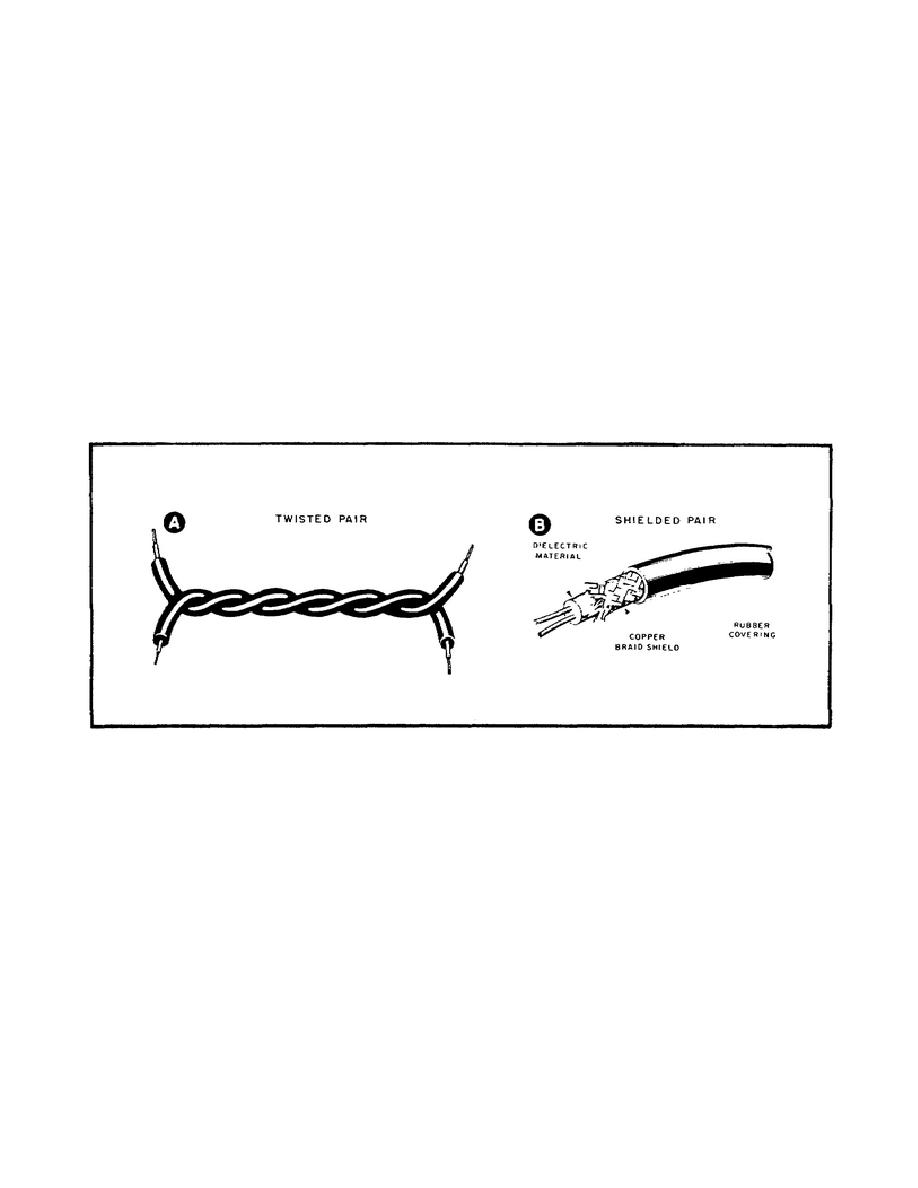
6.
Types of transmission lines.
Before we go further into transmission line principles, let's see
what types of transmission lines you're likely to meet in your work. There
are many types of transmission lines in use today. Each type has its own
particular advantages.
The choice of transmission line for any specific
installation depends on the amount of power to be transmitted, the frequency
of operation, and the length of line needed. Only the more common types of
transmission lines are described here.
7.
The twisted pair.
a. This type of line, shown in Part A of Figure 3, consists of two
unshielded insulated conductors twisted together. Twisting the wires holds
the lines together and helps to reduce radiation losses. Radiation losses
occur at higher frequencies. At RF frequencies, the transmission line acts
like an antenna, radiating the RF energy into space.
Thus, most of the
signal is lost before it gets to the antenna.
Figure 3.
The Twisted Pair and Shielded Pair.
b. In radar installations, the twisted pair is used for power
transmission over short distances. It is not used at very high frequencies
because of excessive losses occurring in the rubber insulation. This type
of loss is known as a dielectric loss.
The twisted pair cannot be used
above 15 megahertz because of excessive dielectric and radiation losses.
The only advantages of the twisted pair type of line are its simplicity,
ease of installation, and low cost. The practical range of characteristic
impedance is from approximately 70 to 150 ohms.
will be explained in detail later.
4



 Previous Page
Previous Page
